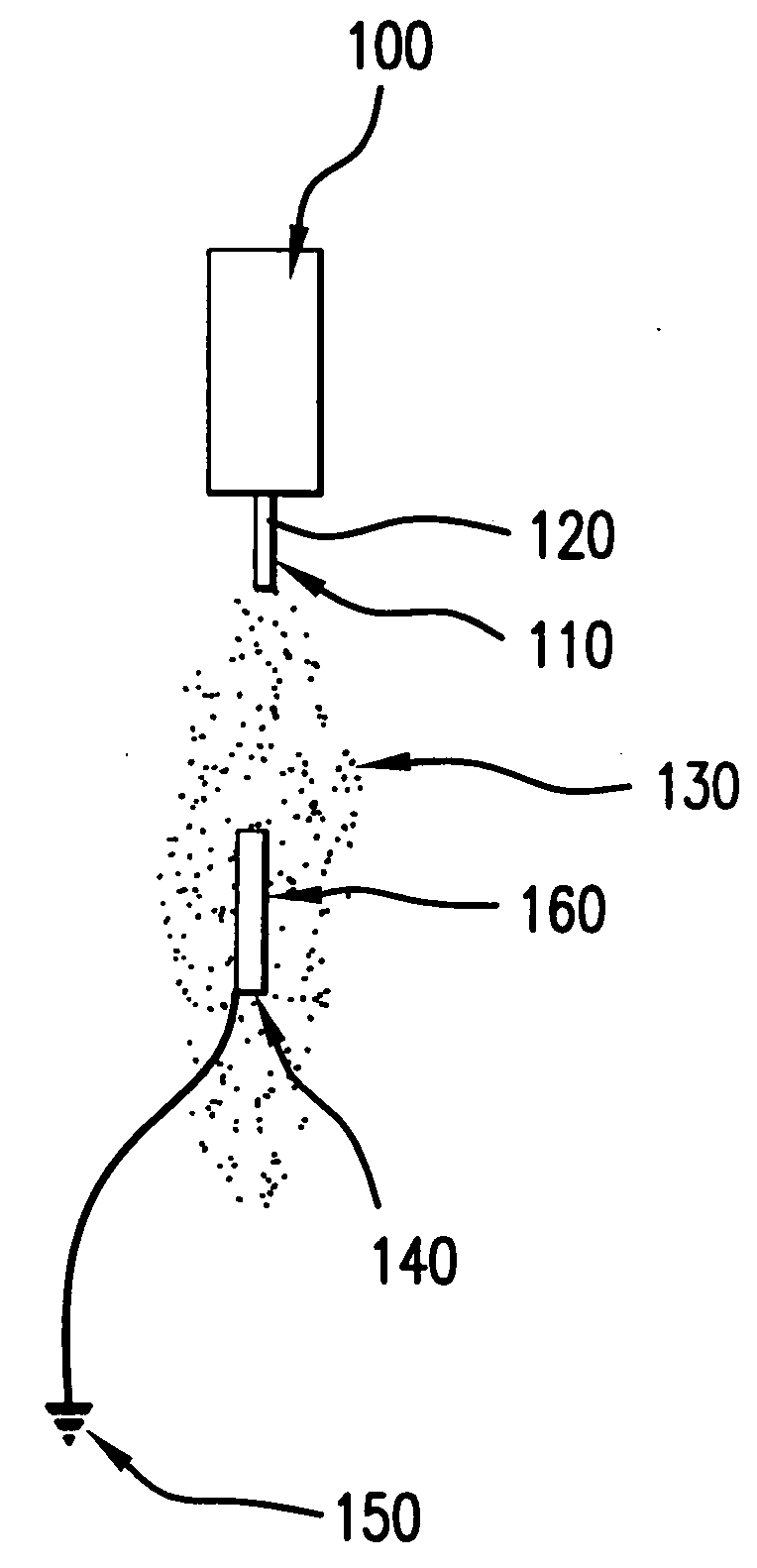Method of improving the quality and performance of a coating on a coated medical device using a solvent to reflow the coating
- Summary
- Abstract
- Description
- Claims
- Application Information
AI Technical Summary
Benefits of technology
Problems solved by technology
Method used
Image
Examples
Embodiment Construction
[0028] In an exemplary method according to the present invention, the device that has been coated is sprayed with a solvent and / or solvent mixture in order to reflow the coated layer and create a final surface finish. The reflow following the spraying with the solvent-only mixture may yield a coating that is uniform and / or consistent, which may be independent of the spray parameters used to coat the device originally with the drug-loaded polymer compound.
[0029] This process may be added as an additional step after the device is coated and dried, or may be completed immediately after the polymer / drug compound is applied (for example, while the polymer / drug compound is still wet).
[0030] After a device has been sprayed with a solvent-only solution, the polymer / drug layer surface finish may be more consistent from batch to batch irrespective of the coating parameters used to apply the coating.
[0031] Additionally, there may be added benefits where the selection of solvents used have t...
PUM
| Property | Measurement | Unit |
|---|---|---|
| Flow rate | aaaaa | aaaaa |
| Concentration | aaaaa | aaaaa |
| Stress optical coefficient | aaaaa | aaaaa |
Abstract
Description
Claims
Application Information
 Login to View More
Login to View More - R&D
- Intellectual Property
- Life Sciences
- Materials
- Tech Scout
- Unparalleled Data Quality
- Higher Quality Content
- 60% Fewer Hallucinations
Browse by: Latest US Patents, China's latest patents, Technical Efficacy Thesaurus, Application Domain, Technology Topic, Popular Technical Reports.
© 2025 PatSnap. All rights reserved.Legal|Privacy policy|Modern Slavery Act Transparency Statement|Sitemap|About US| Contact US: help@patsnap.com



